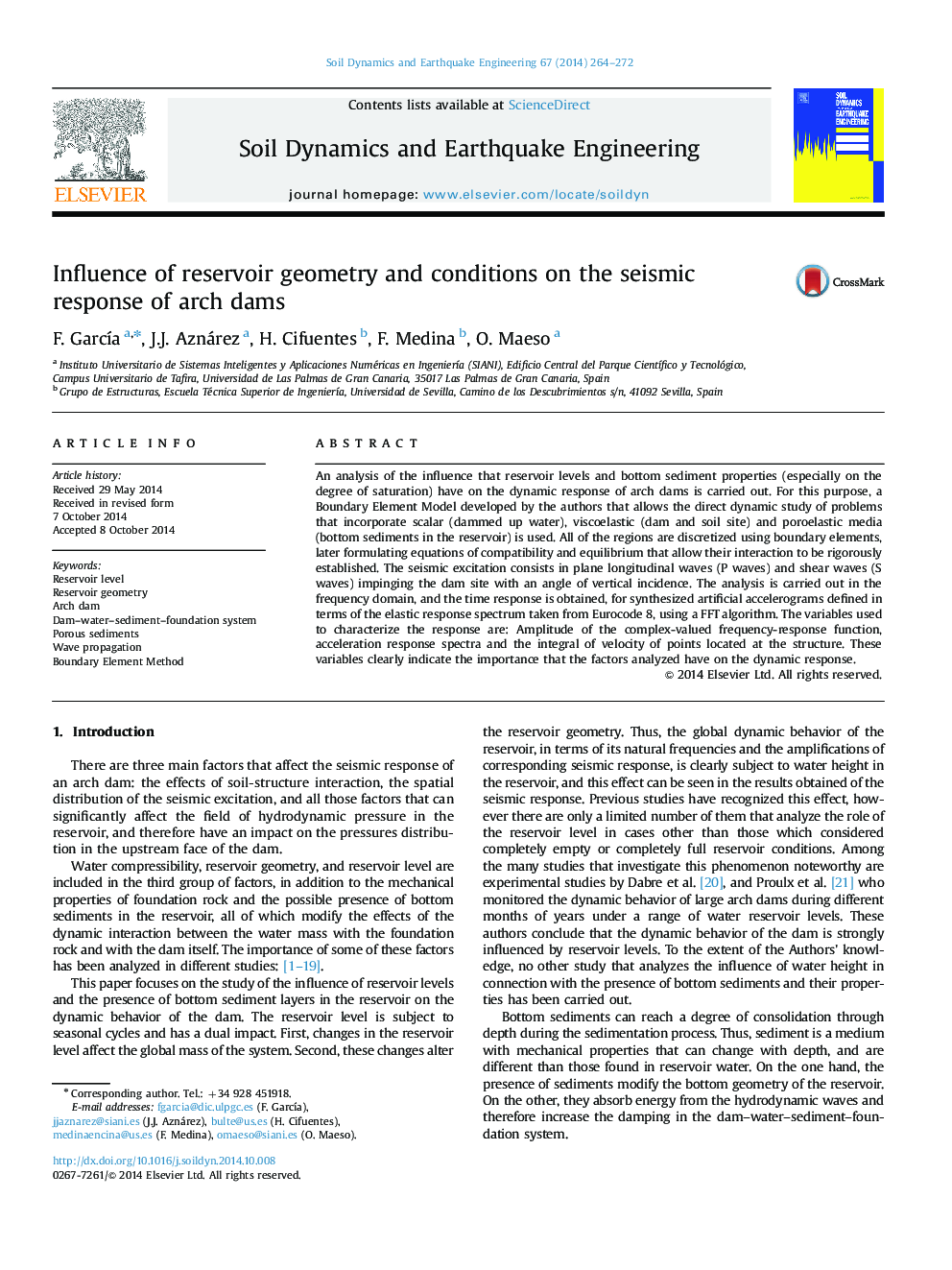| Article ID | Journal | Published Year | Pages | File Type |
|---|---|---|---|---|
| 6772419 | Soil Dynamics and Earthquake Engineering | 2014 | 9 Pages |
Abstract
An analysis of the influence that reservoir levels and bottom sediment properties (especially on the degree of saturation) have on the dynamic response of arch dams is carried out. For this purpose, a Boundary Element Model developed by the authors that allows the direct dynamic study of problems that incorporate scalar (dammed up water), viscoelastic (dam and soil site) and poroelastic media (bottom sediments in the reservoir) is used. All of the regions are discretized using boundary elements, later formulating equations of compatibility and equilibrium that allow their interaction to be rigorously established. The seismic excitation consists in plane longitudinal waves (P waves) and shear waves (S waves) impinging the dam site with an angle of vertical incidence. The analysis is carried out in the frequency domain, and the time response is obtained, for synthesized artificial accelerograms defined in terms of the elastic response spectrum taken from Eurocode 8, using a FFT algorithm. The variables used to characterize the response are: Amplitude of the complex-valued frequency-response function, acceleration response spectra and the integral of velocity of points located at the structure. These variables clearly indicate the importance that the factors analyzed have on the dynamic response.
Related Topics
Physical Sciences and Engineering
Earth and Planetary Sciences
Geotechnical Engineering and Engineering Geology
Authors
F. GarcÃa, J.J. Aznárez, H. Cifuentes, F. Medina, O. Maeso,
